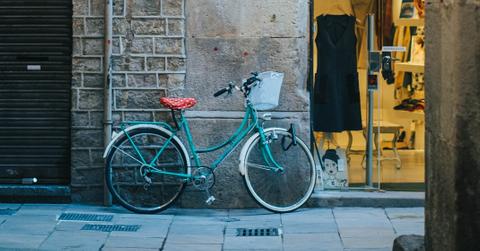
Love To Bike? You're In Luck: Cancer Rates Reduced By Cycling To Work, Study Shows
In recently published findings, research by the National Institute for Health Research (NIHR) has shown a significant reduction in cancer incidents and mortality rates in people that cycle to work.
As the government continues its efforts to encourage greener transport options following the easing of lockdown restrictions, will a boost in bike sales prove to be the start of a new cycling revolution in the U.K.?
The Research
By comparing census records in England and Wales and data from the Office for National Statistics, the NIHR study revealed a 20 percent decrease in all causes of death for those who cycle to work as opposed to those who commute using personal vehicles such as cars or motorbikes.
Furthermore, the research determined that there were reductions in mortality for other pronounced diseases. Deaths by cardiovascular disease reduced by 24 percent, and deaths by cancer reduced by 16 percent. In fact, reported cases of cancer were 11 percent lower in cyclists than in private commuters.
A reduction in cancer incident rates was also found in those who walk to work instead of driving.
The benefits that cycling contributes to an individual’s health, interestingly, is unaffected by socio-economic backgrounds. The merits were universal.
The study did not analyze the reason for an increased mortality among motorized transport commuters, however, it did suggest that air quality and physical exercise contributed to the problem. Increased noise and stress levels may also influence health problems.
In comparison to other sectors, over 25 percent of global CO2 emissions were caused by the transport sector. In 2020, these emissions are expected to decline by eight percent, which is suggested to be a consequence of the coronavirus outbreak and the restrictions on unessential travel.
Lockdown caused a serious reduction in the use of motorized transport. But have health uncertainties relating to the coronavirus breakout stimulated a biking revolution?
Bike Sales Boom During Lockdown
On March 23, PM Boris Johnson announced the start of a nationwide lockdown in the U.K. Exercise was limited to one form a day.
Data collected by the family-run biking company Leisure Lakes Bikes, reported an 85 percent rise in visitors to their website, with the average customer spending 43 percent longer browsing their products.
With Google searches for "bicycle" increasing by 53 percent over lockdown, this trend is being repeated across the spectrum.
On April 11, when the government began encouraging the public to return to their workplace, Google searches for "electric bicycles" had increased by over 425 percent when compared to the start of lockdown.
Ben Mercer of Leisure Lakes Bikes says that this is indicative of a public wanting to commute by bicycle. He added: “The primary use of electric bicycles is commuting. The increase in interest for assisted cycling products shows that people want to use greener and healthier options to travel to work – even if it is a greater distance than driving.”
Of course, safe infrastructure is needed for many people to commute to work by bicycle. The choice to not cycle to work is decided by a lack of bike lanes and access to equipment, not by individual motivation.
A Cycle Of Investment
The public have become acclimatized to continual advocations and investments by public bodies to encourage commuters to cycle—whether it is to save ourselves, the NHS, or the planet. But will the government’s recent investment help to hit the brakes on repeated failures to get Britain biking?
An eye-watering £2bn worth of public investment was announced by Transport Secretary Grant Shapps, aimed at the creation of emergency bike lanes, among other measures to encourage greener alternatives to public and private transport.
Johnson said: “Now is the time to shift gears and press ahead with our biggest and boldest plans yet to boost active travel – so that everyone can feel the transformative benefits of cycling.”
Lockdown has motivated a sharp increase of walkers and cyclists on roads, the government’s hand has been forced into creating safe and socially distanced passages for everyone – particularly in city and town centre areas.
In attempts to improve air quality and maintain social distancing around heavy pedestrian areas, busier locations are expected and encouraged to be transformed into bus and bicycle lanes only. With the recent report suggesting that improved air quality contributes to lower mortality rates, will the restrictions on motor transport in our town centers contribute to a declining incident rate of cancer?
Regardless, the U.K. boasts unpredictable weather. The public may be discouraged from cycling to work in the sun if they think they’ll be going home in the rain. But with the shock of the coronavirus pandemic, the benefits of avoiding public transport and supporting our pulmonary and cardiovascular health by cycling are ever-increasing.
Andrew Richardson is a copywriter at online marketing agency Mediaworks. He writes for a variety of sectors, including sports, financial services and healthcare at one of the North East’s leading agencies.
